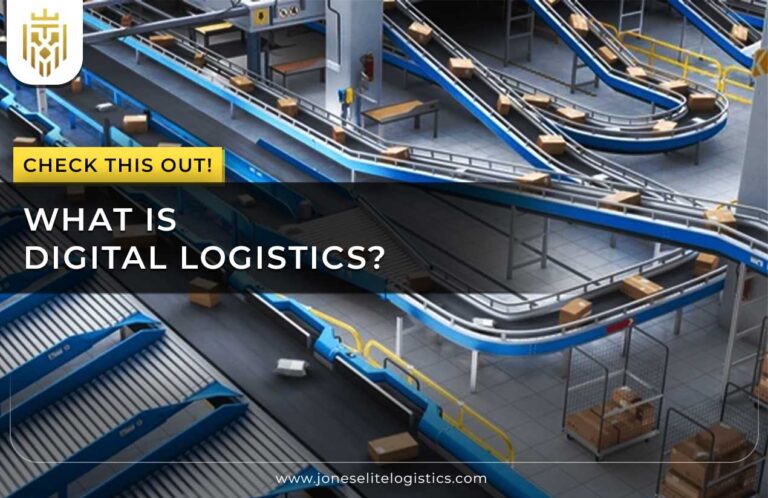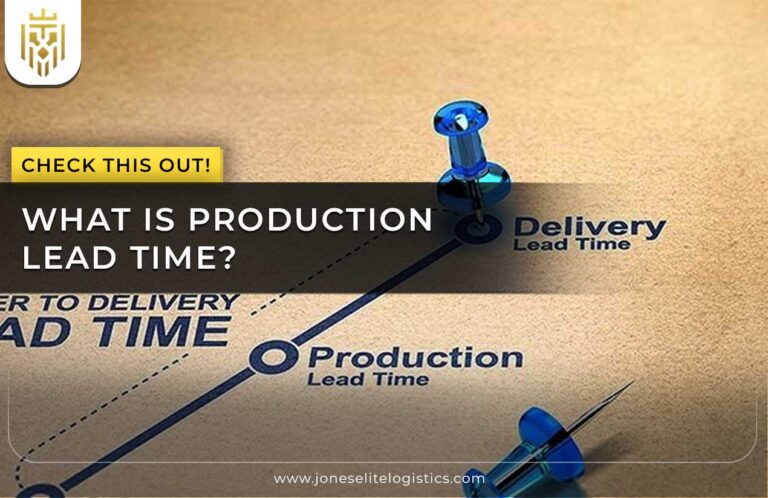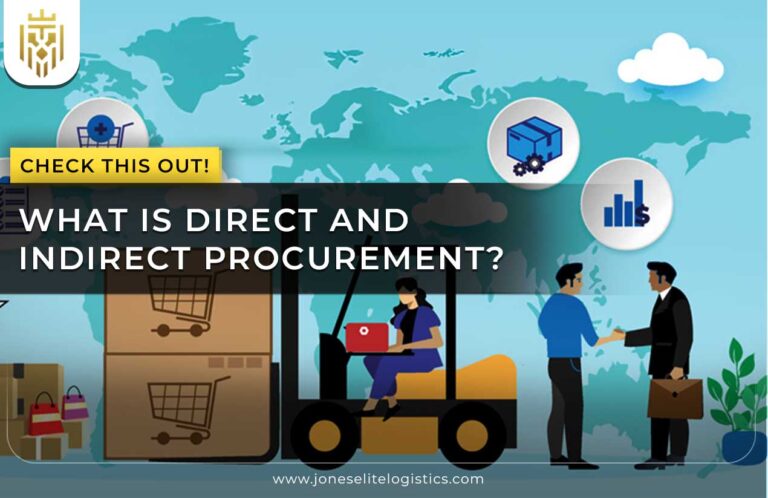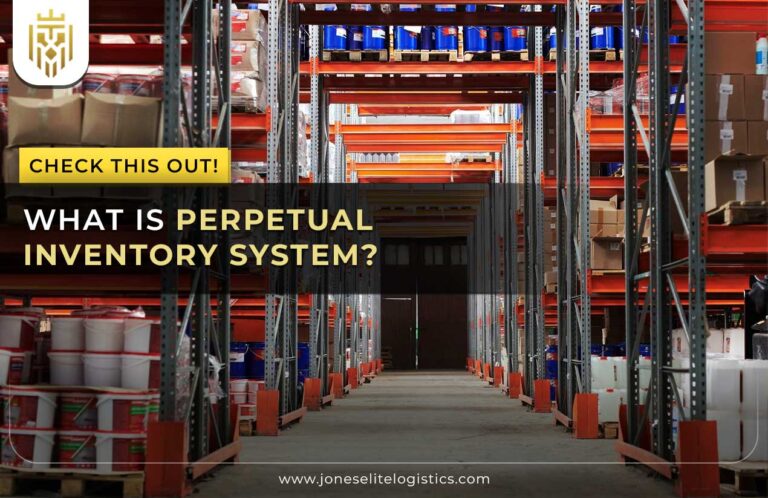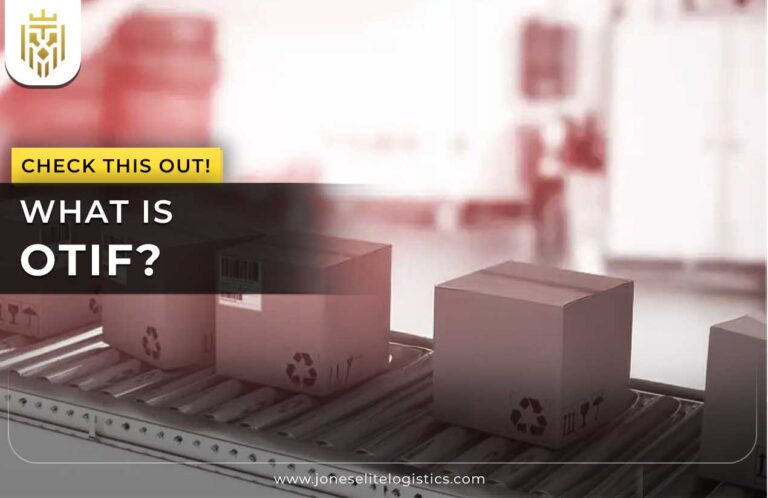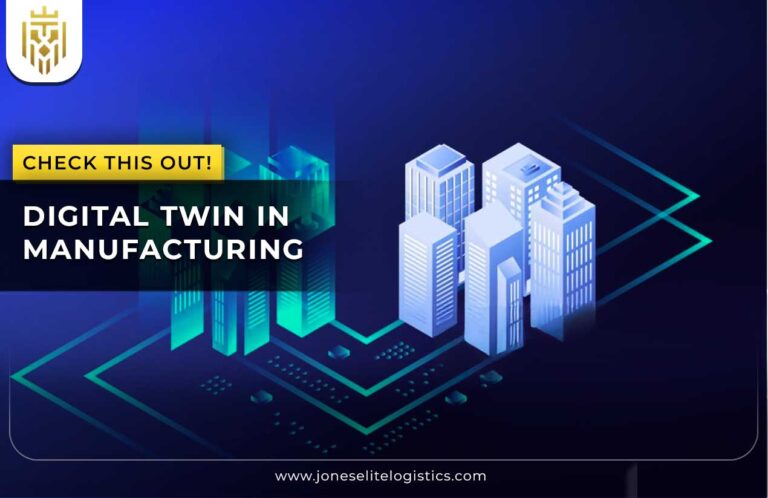What is a Digital Twin in Manufacturing?
A digital twin in manufacturing is a virtual model of a physical system developed through the use of sensor data and analytics. It simulates and predicts system performance to help manufacturers visualise and solve problems efficiently. This approach improves operational efficiency and the digital twin manufacturing paradigm is essential for modern industrial innovation.
Why use a Digital Twin in Manufacturing?
The digital twin in manufacturing optimises efficiency, lowers costs and improves product quality. Workflows are improved by applications such as predictive maintenance, process optimization and remote monitoring. This technology reduces time to market by addressing issues virtually before production, aligning with digital logistics technology.
Components of Digital Twin in Manufacturing:
The components of digital twin in manufacturing include IoT sensors for real time data collection, data integration for accurate modelling and simulation models to optimize production processes, design refinement and improving decision-making.
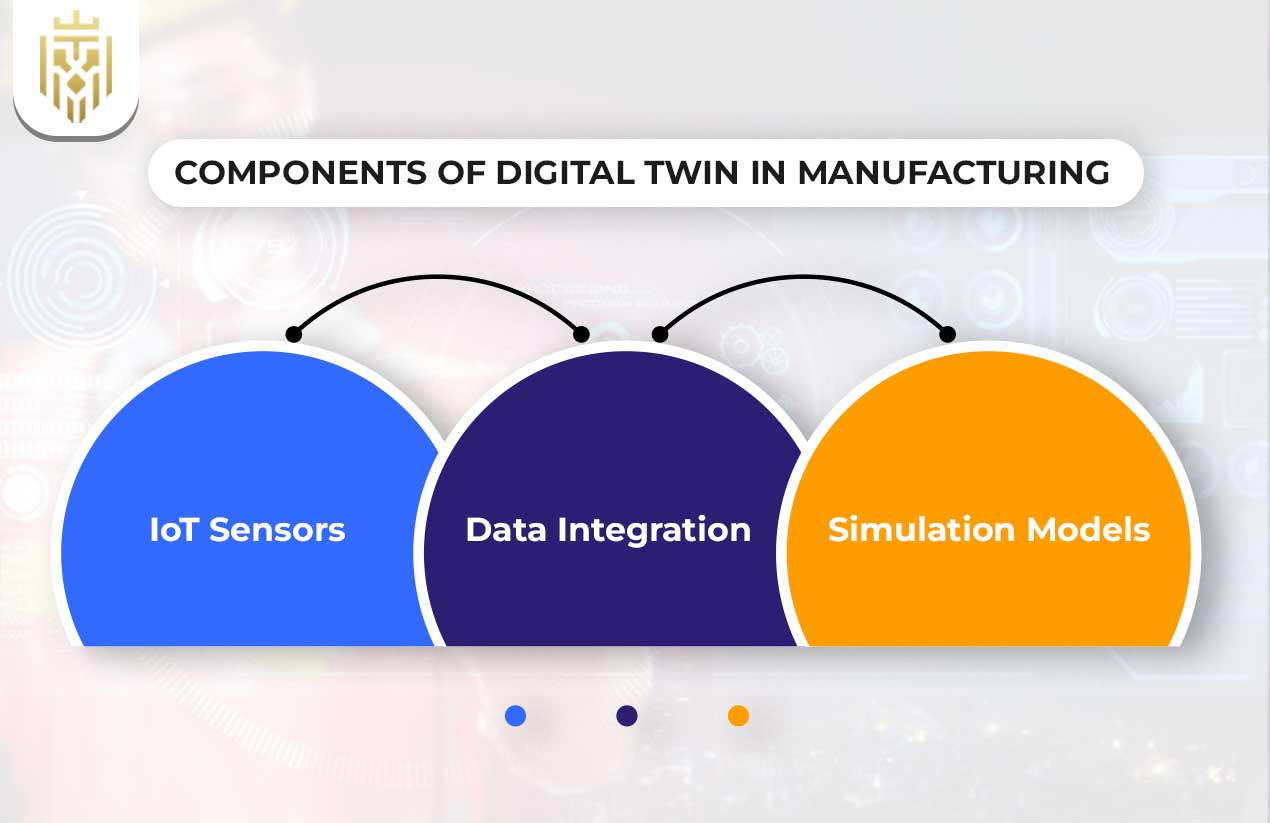
IoT Sensors:
IoT sensors serve as a foundation for various types of digital twin technology that collect real time data from physical systems. The data behind the manufacturing digital twin powers simulations, forecasting, and decisions, enabling digital twin manufacturing to optimize processes. From an IoT perspective, manufacturers can integrate more reliably and with more precise performance insights.
Data Integration:
Digital twins In manufacturing require data integration, where IoT devices provide accurate real time data. The integration helps refine virtual models for predictive analysis and better decision-making. It connects logistics to AI, and physical systems, to achieve efficiency and ensure seamless operations.
Simulation Models:
Digital twin manufacturing simulates physical systems in digital twin manufacturing using real time data for optimization. Through mathematical or 3D simulations they identify production flaws and refine designs. These types of digital twin in the industrial domain improve product quality.
Benefits of Digital Twin in Manufacturing:
Digital twin manufacturing increases operational efficiency, enhances product quality and cuts costs. It enables predictive maintenance, improves supply chain resilience and personalises customer experience which matches up with digital logistics for smarter, seamless workflows.
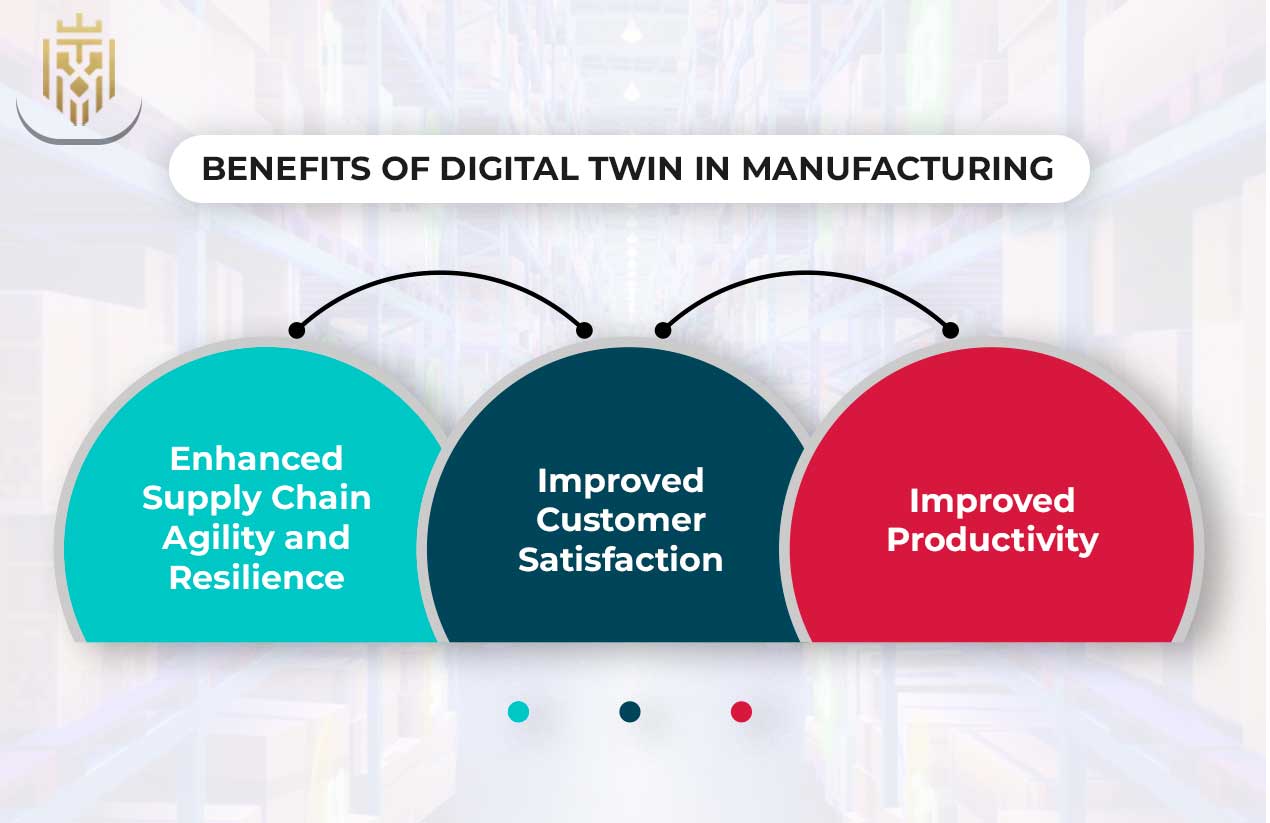
Enhance Supply Chain Agility and Resilience:
The digital twin in manufacturing enhances supply chain agility with real time visibility of inventory and production. It works proactively to deal with disruptions, and logistics are optimised for greater resilience. It is integrated with AI in logistics, so it makes quick and wise decisions.
Improved Customer Satisfaction:
Manufacturers create personalized products and provide better service by using various types of digital twins. Maintenance needs can be predicted; reliability improved through digital twins; and remote assistance is provided. It enhances customer experience and corresponds to the development of digital logistics.
Improved Productivity:
A digital twin in manufacturing monitors systems, predicts failures and minimises downtime. Remote monitoring and virtual training simplify the process of operations, increasing productivity. It is also in line with AI in logistics, making workflows smarter and operations more efficient.
Application of Digital Twin in Manufacturing:
Digital twin applications in manufacturing include predictive maintenance, quality management, supply chain optimization and product design. Extending the ‘simulation’ idea into computer space, it substantially accelerates innovation by allowing virtual simulations, process optimization, and reducing production costs and time to market.
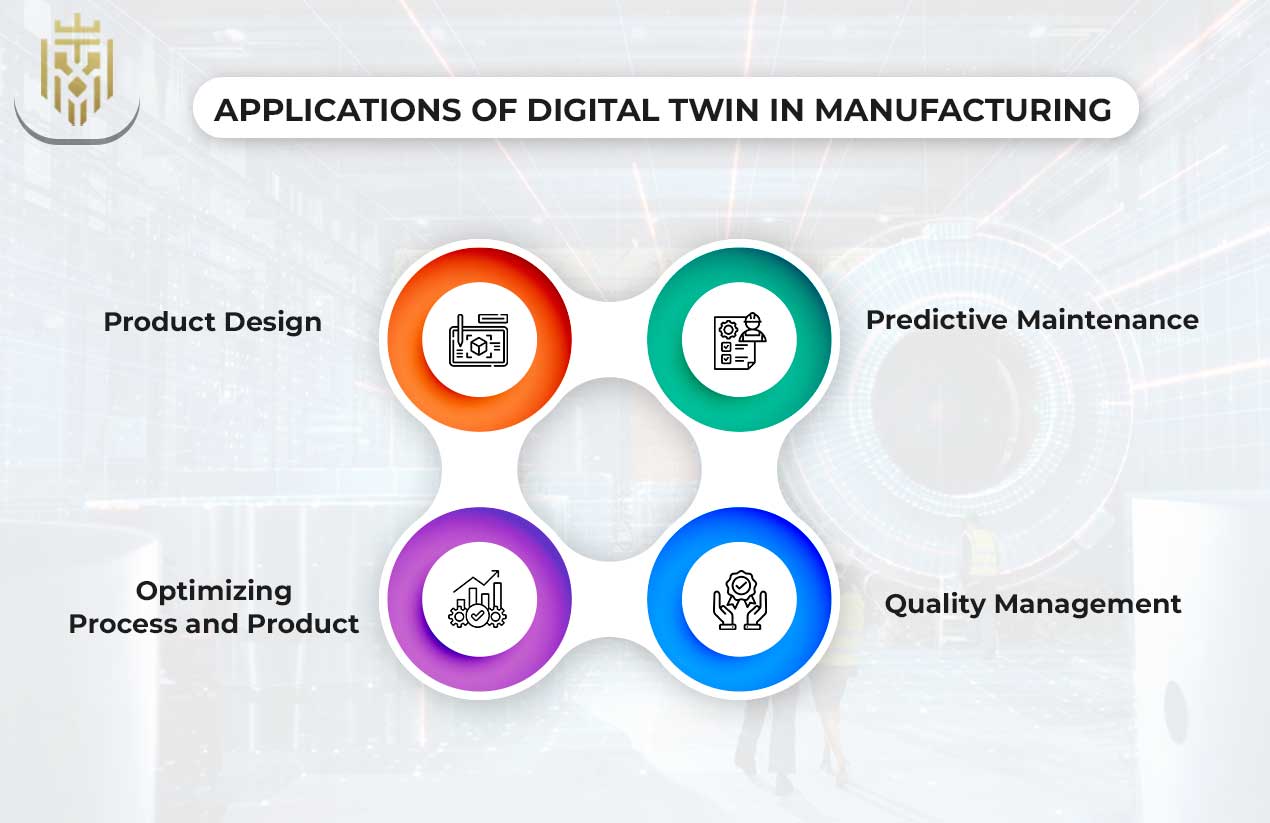
Product Design:
Digital twin manufacturing revolutionises product design by allowing rapid prototyping, testing virtually, and identifying flaws early on. This allows manufacturers to simulate performance across multiple environments fully and reduce cost and schedule. It enables integration of various types of digital twin for enhanced product innovation.
Predictive Maintenance:
A digital twin n manufacturing uses real time data and predictive models to predict equipment failures using the digital twin. It reduces unplanned downtime, optimises inventory and builds a better maintenance plan. Also, it supports AI in logistics by helping to increase operational reliability and efficiency.
Quality Management:
All types of digital twins can improve quality management through real time monitoring, root cause analysis and design validation. It does the same thing as ensuring production standards, reduces defects, and optimises inventory. These improvements are supported seamlessly by the integration of AI in logistics.
Optimize Process and Product:
Digital twin manufacturing monitors real time, predicts maintenance, and analyses processes to optimize them. This is a company that uses AI in logistics modelling and optimization. Machine learning data driven insights increase operational efficiency to reduce cost and improve outcomes.
FAQs
-
What is Digital Twin in Manufacturing?
A digital twin in manufacturing is a virtual model of a physical system developed through the use of sensor data and analytics. It mimics performance, helping manufacturers optimize operations, predict problems and improve decision-making.
-
What are the benefits of Digital Twin in Manufacturing?
Digital twin manufacturing increases operational efficiency, enhances product quality and cuts costs. It enables predictive maintenance, improves supply chain resilience and personalises customer experience which matches up with digital logistics for smarter, seamless workflows.
-
What are the applications of Digital Twin in Manufacturing?
Digital twin applications in manufacturing include predictive maintenance, quality management, supply chain optimization and product design. Extending the ‘simulation’ idea into computer space, it substantially accelerates innovation by allowing virtual simulations, process optimization, and reducing production costs and time to market.
-
What are the components of Digital Twin in Manufacturing?
The components of digital twin in manufacturing includes IoT sensors for real time data collection, data integration for accurate modelling and simulation models to optimize production processes, design refinement and improving decision-making.

